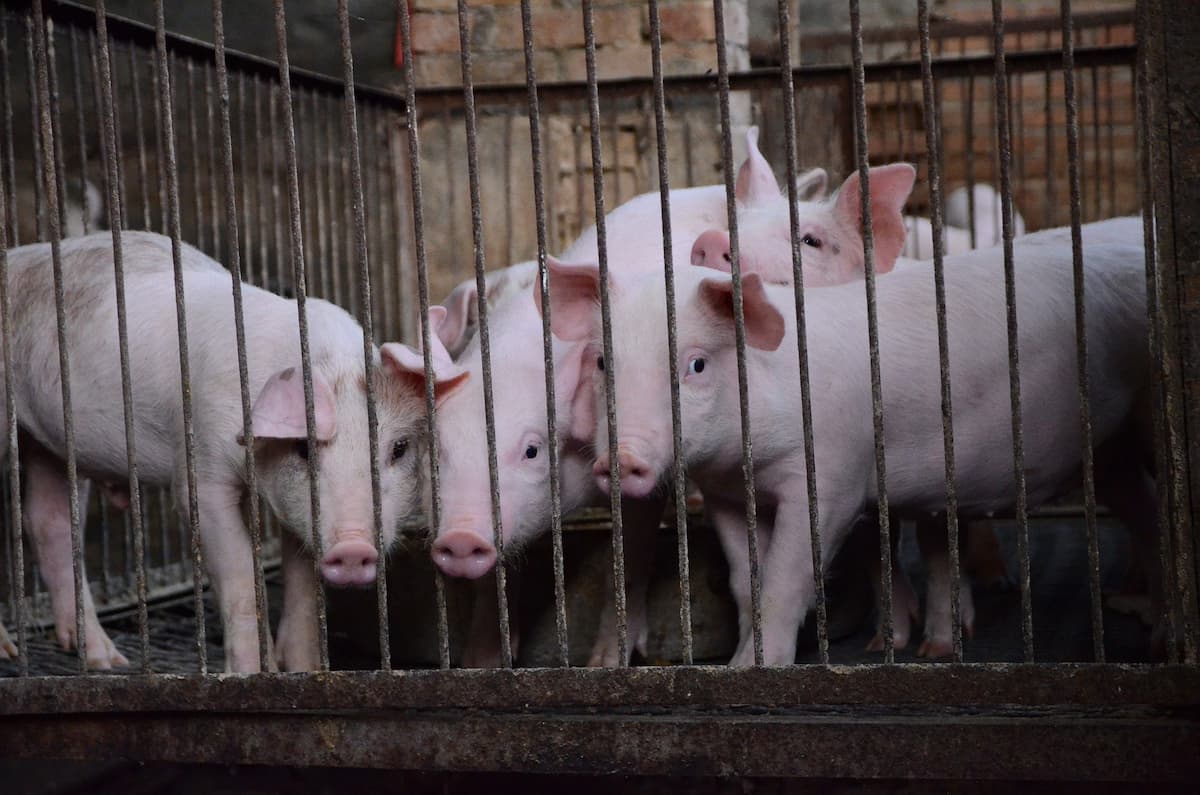Pigs (Sus scrofa domesticus) Farmers Community
Piggery project: A detailed guide to starting a successful pig farm
- This topic is empty.
- AuthorPosts
- February 27, 2025 at 11:35 pm #575282
 Agric4ProfitsKeymaster
Agric4ProfitsKeymaster
Starting a piggery project can be a lucrative business venture with the potential to provide both short-term and long-term profits. Pigs are known for their rapid growth rate and high reproductive potential, which makes them a valuable livestock for farmers.
However, embarking on a pig farming venture requires careful planning, adequate knowledge, and proper management. From selecting the right pigs to managing their health, environment, and feeding, there are several key factors to consider.
This article will provide a detailed guide to starting a successful piggery project, offering insights into its essential aspects to ensure a thriving farming operation.
1. Selecting the Right Breed of Pigs for Your Piggery Project
The first step in a piggery project is choosing the right breed of pigs to raise. Different pig breeds are known for various traits, including growth rate, reproductive performance, and adaptability to different environments.
It is crucial to choose a breed that aligns with your goals, whether they are focused on meat production, breeding, or both. Common breeds like the Large White, Landrace, and Duroc are popular choices due to their excellent growth rates and high-quality meat.
Additionally, factors like the climate, feed availability, and farm resources should influence the breed selection.
Researching and consulting with experienced farmers or agricultural extension officers can help ensure the best choice for your project.
2. Designing and Building an Efficient Piggery Facility
An essential part of starting a piggery project is designing and constructing a suitable facility to house your pigs. The piggery should be spacious, well-ventilated, and hygienic to promote the health and well-being of the pigs.
The space must allow for easy movement and should be separated into different sections for breeding, farrowing, weaning, and growing pigs.
It is important to ensure that each pig is provided with adequate space to prevent overcrowding, which can lead to stress and health issues.
The flooring should be durable and easy to clean, while the pens should be designed to minimize disease transmission. Additionally, a good water supply system and proper waste management practices are essential to maintain cleanliness and avoid contamination in the facility.
3. Proper Feeding and Nutrition for Pigs
Feeding plays a critical role in the success of any piggery project. A balanced diet that meets the nutritional requirements of pigs is crucial for their growth, reproduction, and overall health. Pigs require a mix of proteins, carbohydrates, vitamins, and minerals to thrive.
The type of feed you provide will depend on the age and purpose of the pigs, as their nutritional needs vary at different stages of life.
For example, piglets require a higher protein diet, while adult pigs may need more energy-rich feed to promote weight gain.
Many pig farmers rely on commercial pig feeds, but it is also possible to create homemade feeds using locally available ingredients.
Regular monitoring and adjusting the feed according to the pigs’ growth rates and health status are necessary for optimal results.
4. Managing Pig Health and Disease Control
Health management is another critical factor in ensuring the success of a piggery project. Pigs are susceptible to various diseases, some of which can be devastating if not properly managed.
Regular vaccination and deworming schedules should be followed to prevent the spread of infectious diseases.
It is also important to create a biosecurity plan that minimizes the risk of disease introduction, such as restricting access to the farm, disinfecting equipment, and controlling pests.
Maintaining a clean and dry environment will help reduce the chances of disease outbreaks. In case of any health concerns, working with a veterinarian who specializes in pig farming is essential to provide timely treatment and prevent the spread of illnesses to other animals.
5. Marketing and Selling Pork Products
After investing time and resources into your piggery project, the next step is to develop a strategy for marketing and selling your pork products. A successful marketing plan will depend on factors such as location, consumer demand, and the type of pig products you plan to offer.
You can sell live pigs, pork meat, or value-added products such as sausages and bacon. It’s essential to understand your target market and determine whether you will focus on local markets, supermarkets, or direct-to-consumer sales.
Establishing good relationships with buyers and ensuring the quality of your products can help you build a solid reputation in the market, ultimately leading to higher sales and profitability.
Starting a piggery project is an exciting opportunity that can lead to a rewarding business if done correctly. Careful planning, including breed selection, facility design, proper feeding, health management, and marketing, plays a significant role in the success of the venture.
By addressing these key factors and ensuring the health and welfare of the pigs, you can establish a profitable pig farming operation that provides high-quality pork products to consumers. With determination, knowledge, and a solid business plan, your piggery project can grow into a successful and sustainable enterprise.
Read Also:Poisonous Feeds That Are Harmful To Pigs: What To Avoid
- AuthorPosts
- You must be logged in to reply to this topic.

